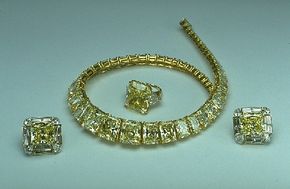On your next trip to the local shopping mall, stop by one of the jewelry stores. Notice the diamond jewelry that takes up the majority of the showcase and the number of people hovering over the counters trying to pick out diamonds for their loved ones. There will surely be a salesperson explaining the "4 Cs" -- cut, clarity, carat and color -- to a young shopper, and explaining why one diamond is better than the one right next to it. Why all the fuss over diamonds?
A diamond is just carbon in its most concentrated form. That's it -- carbon, the element that makes up 18 percent of the weight of your body. In many countries, including the United States and Japan, there is no other gemstone as cherished as the diamond, but in truth, diamonds are no rarer than many other precious gems. They continue to demand higher market prices because the majority of the diamond market is controlled by a single entity.
Advertisement
In this article, we will track a diamond from the time it is formed to when it reaches the Earth's surface. We will also examine the artificial rarity created by the diamond cartel, De Beers, and briefly discuss the properties of these gems.
First, we'll discuss carbon, the element behind the sparkle.

